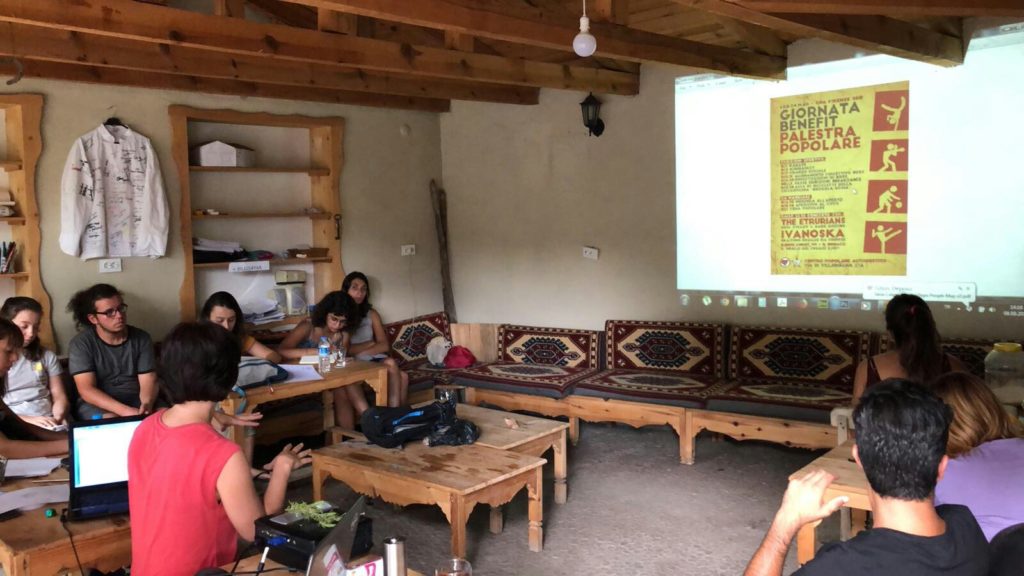This summer 2018 I was involved in the project of Depo Pergamon, as stated in the title, a Restoration workshop held in Bergama, province of Izmir, Turkey.
Subject of the workshop is the Restoration of a Tobacco Warehouse situated in the historical center of the city, the ancient Pergamon.
Bergama is a populous modern town which still breaths its glorious past. Situated on important touristic routes, is famous for the renowned Zeus Altar (at the Pergamon Museum in Berlin), the Hellenistic urban and landscape planning, the authentic and still alive Ottoman settlement, the relaxed lifestyle that a small city can offer and, not last, the local, genuine, traditional food.
Since 2014 belongs to the World Heritage List of UNESCO sites for its Multi-Layered Cultural Landscape.
Depo (from Turkish: warehouse) was dismissed and its destination of use changed until a few years ago, when it was totally abandoned. Thanks to its strong temper and presence in the urban fabric, the building is going to be revived by the synergy between the new owner (an Italian Gourmet) and a Spanish architect settled in Istanbul, plus a huge group of volunteer students coming from Turkey, Spain, Morocco and Colombia.
The existing building is located in the center of Bergama (Turabey district), on Emir Sultán street. The surface of the plot is approximately 247 m².
It is a vernacular industrial architecture, surrounded by Ottoman houses and new constructions of the twentieth century; a two-storey building, with solid brick load-bearing walls. The original entrance is a double-leaf metal door. The upper floor was been added in a second period, supported by columns and wooden beams.
The building is covered by two independent gabled roofs with wooden structure and flat ceramic roof tiles.
THE RESTORATION PROJECT
Turkey is a country that has a valuable heritage but sometimes little is done to keep it in good conditions and available to the public.
Heritage buildings are crucial in terms of transferring the cultural identity for further generations. Where heritage buildings can no longer function with their original use, proposing a new function is inevitable in order to preserve the significance of the building itself.
Working on a tight budget, lacking the financial support of the institutions, the aim of this self-financed Restoration Project is to return the building to the local community (and to the public in general), with a socio-cultural program.
THE PROGRAM
During my stay at Depo Pergamon Workshop, I could experience some hints of the daily life of both volunteer students and organization members. The activities are planned in a communal way, with all the members of the community sharing duties and learning activities both practical and theoretical. Enough space for recreational time.
Meals were organized according to the original intention of using the culinary experience as a common language and as a way to propagate Culture. Locally sourced ingredients were provided for the preparation of all the meals. This Zero-mile statement is supposed to support the local market in a sustainable way.
By merging 1) the characteristics of the building, 2) the owner’s desire for a place where is possible to cook and share the pleasure of food, 3) the architect’s indication of a self-managed cultural space permeable to the local and world community, the Program is already coming to life during the Workshop period.
Depo will fulfill the function of a connector with the surrounding territory and gastronomic tradition through the use of spaces dedicated to the local products market, the preparation of meals farm-to-table style, in a participatory process.
Cultural and Social activities such as concerts, workshops, screenings, and music will have dedicated spaces. This Program wants to involve the various local communities and all the public that will be eager to go to Depo and make the building breathing together with the City.
References for this project‘s typology can be found in self-managed social centers widespread in Europe in the last 40 years. Nowadays, an answer to the need for face-to-face sociality, far away from the shopping malls and online social media, an act of re-appropriation of the City, independent and self-managed, spaces in the urban fabric which are able to host those expressions of the Community that otherwise wouldn’t have physical room.

The sustainability of the project lies in the resilience of the building, in the typology of program and in the Social Capital, namely the collaboration between all the people involved (Organization of the Workshop, Volunteer Students, External Collaborators, Cultural Institutions, Local Administration, Sponsors), which gave the chance of generating a creative energy whose results we can already appreciate and are still a work in progress.
ecoarchitecture.it
SOURCES
www.depopergamon.com (in Turkish and Spanish)
https://whc.unesco.org/en/list/1457 (UNESCO website)









